You're Using Traps Wrong
There seems to be a pervasive trend in games with bad traps. From generators and articles presenting traps as a simple flavored DC and damage, or DMs that are obsessed with either punishing players for not constantly rolling high on perception or being sufficiently paranoid at every room and hallway. Some DMs don't even bother, making the correct conclusion that they just slow everything down, training your players to laboriously pour over every square foot, lest there be some sort of trap laying in wait. Yet even that is wrong, since traps play an important role in the game's balance.
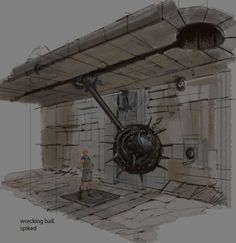
Traps should be more than just random saving throws to determine whether or not the dungeon deals damage to you. While that serves an important purpose in whittling away at party resources as they explore dangerous locations, a good trap can feel more like an encounter or a memorable highlight of the adventure. It's also important to strike a balance with the number of traps. If you have too many, the game will grind to a crawl as the players become paranoid about everything, diligently checking every nook and cranny for possible pitfalls and ensuring they never get anywhere.
A good trap is a natural part of the world. If traps can only be detected by rolling well enough on perception checks, then you encourage your players to constantly make perception checks hoping for a lucky roll. Passive perception is meant to alleviate it, but since players can make active perception checks then the result is really binary: either you auto-detect the trap doing nothing or you should always be rolling hoping to score above a 10. Instead, traps could be detectable without any rolling at all, putting the pressure on the players to pay attention and notice oddities. In the same way you would describe a room, you can also describe the trap that lurks in the room, but just like a trap, described in a sneaky way that either intrigues players to investigate (triggering the trap) or blending into the rest of the room so the players only realize their mistake after it's triggered.
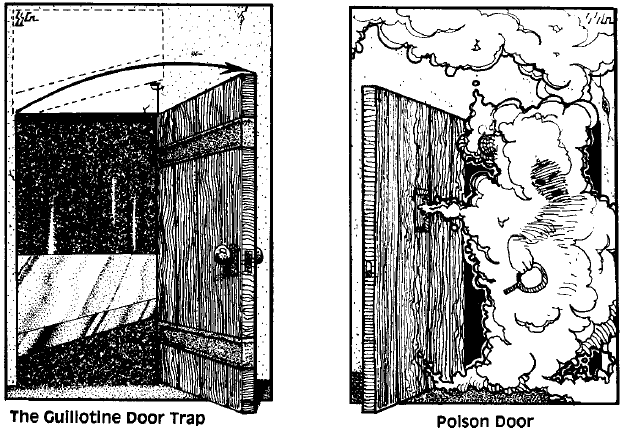
Little hints in the room's description can alert your players to danger, and just like DCs you can gradually introduce subtler elements. Scorch marks, grooves in the floor, a decayed support beam, or scrape marks on the wall can be a good start for getting your players to take notice, and more importantly, feeling dumb for not paying attention if they trigger the trap. As they get better, the hints can get harder and you can incporate more red herrings. Perhaps the wall is worn away in part just because the room is old. Try to find a good balance based on your group, if they're being overly cautious in harmless rooms, then try to make the traps a little more obvious. If they're too non-nonchalant and reckless then you probably need more traps that are harder to detect. They key is always to ensure the players realize after the fact that they missed an important clue. If you have trouble with players that tune out unless it's their turn in combat this can be the perfect solution. They tune out because they've realized nothing important will happen and traps will make them realize they need to pay attention outside of combat as well.
Once the trap is detected, it needs to be disarmed or circumvented. There should actually be 3 ways to disarm every trap: the intended way, a clever practical way, and a brute force way. Let's use an example. A pressure plate on the floor that triggers a nearby statue to breathe fire on whoever steps on it. Scorch marks around the pressure plate can alert new PCs to danger, or perhaps describe the statue with an open mouth if your players are a little more savvy. This trap could be defeated by disarming the mechanism with thieves' tools (DC 15 or whatever is appropriate to your party), wedging something under the pressure plate to keep it from depressing, or throwing something heavy (20 pounds or more) onto the plate to trigger it safely from a distance. You can accept other clever solutions to disarm the trap since it encourages your players to get engaged and come up with solutions, but if your players are particularly smash-happy or lazy you should punish unintended brute force. For instance, if they decide to smash the statue that would rupture the pipe inside and cause fire to spew out everywhere. Smashing the pressure plate also counts as triggering it. This way you're not totally dependent on the rogue to make all your skill checks and the barbarian has something to do besides building dice towers. If a failed check or failed solution triggers the trap this also creates a risk that the party collaboratively needs to decide on. Do they let someone make a skill roll, or do they try the unorthodox solution?
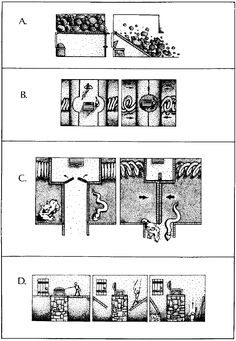
There's one other type of trap that should be sprinkled in: the long-form trap. This one occurs over several rounds and plays out more like a combat encounter where initiative and actions matter. Simply announcing “roll initiative” can be enough to get some players to focus, so try to add in these as well to get your players involved. A long-form trap has its own initiative and acts on its turn becoming more dangerous each turn. The players win by disabling the trap or escaping, making it an encounter more about survival than killing something (though destroying the trap may be a solution).
Let's use two examples this time. One such trap could be a rolling boulder that comes out of the ceiling, rolling initiative and moving 60 feet on its turn. Players caught underneath are knocked prone and crushed for 10d10 bludgeoning damage unless they make a dexterity save to squeeze through the gap between the sphere and the wall. The sphere can be stopped by making it hit a barrier or making a DC 20 strength check if they're within 5 feet, slowing the sphere down by 15 feet on a success. Alternatively, outrunning the sphere to the end of its track can also be a success.
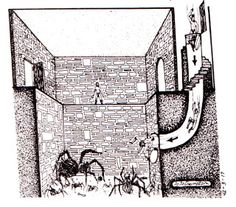
Another long-form trap can be a room full of poison gas. A room full of statues, when triggered, causes the door to slam shut and lock while the statues open and spew gas into the room. Every turn the gas density becomes thicker and more deadly, increasing by 2d10 poison damage on its turn (to a reasonable max of 10d10). The trap can be circumvented either by getting the door open or disabling the statues. Opening the door requires overcoming a complicated locking mechanism, with a DC 20 Perception check to find the mechanism, a DC 20 Arcana check to disable it, a DC 20 Dexterity check with tools to pick the lock, and a DC 20 Strength check to open the door. Each check uses an action. Alternatively, disabling the statues by clogging the pipes with cloth or similar can stop the flow of poison. Doing so would require a player to hold the pipe closed, meaning each player would need to be assigned to a statue to keep it clogged, otherwise the pressure in the pipes eventually forces out the object. Destroying the statues ruptures the pipes, causing poison to flow into the room more quickly.
The key to a good long-form trap is the ticking clock, every action should feel important. Every wasted turn brings you closer to death, and even successful actions should make you wonder if you'll make it in time. It should be a real group effort by everyone making good use of their turns to ensure survival, which both helps with camaraderie and gets the players talking on every turn to decide what the best course of action is.
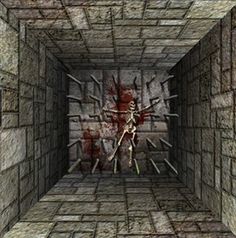
Hopefully this can help you elevate your trap usage and turn them from a damage check for the party's rogue into an engaging experience for everyone at the table. If you're interested in more D&D content, generators, and tools then click this whole sentence.
Shout outs: Stacey, mike richard, HilloDark, Brian Tanner, Armand Desharnais, Trev909, Bob Goode, TODD RICHARD, Iofire, Caitlin W., Damon Carrington, Mario Pizzamiglio, Phil Mehl, Wesley Muncy, elijah D. maben, R., bruschkin, Vincent Drone, thea musing, Brian Nunziato, Matt Yates, Elisa Martinez, Ryan Flagg, Jade Arrowood, Angelo Anderson, Syn21, Dave Walker, Jonathan Lekse, Katie White, JollyGamer, Tiernan Greenman, Burlyfighter, David R Abbott, Rick Marsh, Brittany DeNicholas, Amanda Kettles, Lou Bliss, Sik Makoyi, Pythor Sen, Bryson Waits, Desedent, Irate The Pirate, Mark L, Siren, AstroLass, Lizzie, Michael Hamilton, Vedie V, Mylon Schroder, Nathan, Jordan Florez, Robert Rich, Jess, Zee Livezey, Kevin, Kerry Melton, SallySparrow132, Millergendraft, Federica Frezza, Nick Soucy, Jeremiah Walker, Bryan Sheairs, chris wilson, Max Hops, Sarah Holland, Joshua David Maddox, Jennifer Smith, Liz Fontain, Ray Bissonnette, Joe Dalby, Matt Price, Nicholas Zamora, ShortyMcgibble, Mr. Vinclair, mtnman1979@aol.com, KFB_Patreon, eric sun, Gundar Wez, Nahellion, That Video Editor Nic, bilbens baggo, Stuart, Brysen Packer, Maxwell Mayer, Thobek, XMrMonkyx ., Miss Zilla M, Jordan Brazeal, Kyle Clark, Jake Lane, Phillip P Torchia, Stefan Gottschalk's, Remora Jewel, Connor, jeremy baisch, Daniel Edwards, Zealot23, Shane Andrews, Brandon Mußiq, CJMAXP, Festus, Lisa Tucker, KingHavok1217, Mx Charlie, Justin Snyder, Zachary Burgess-Hicks, Steve Rosenlund, Ezzela1891, John Nazario, Gordon Alexander Fallon, zachary gee, Jason Clark
Their contribution stands as a beacon of hope for all adventurers!


